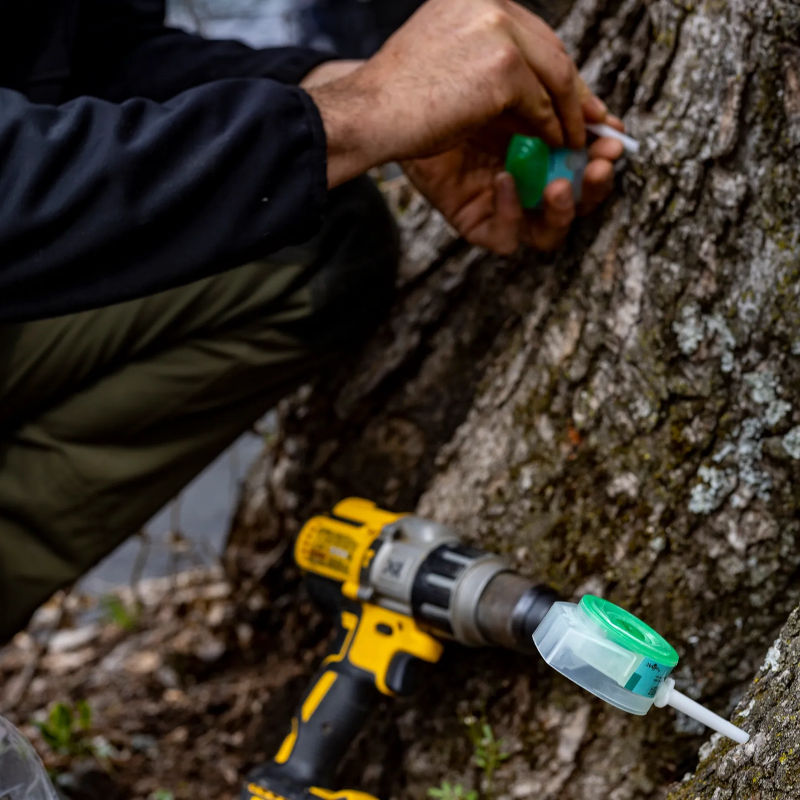Spring Tree Care: Why Timing is Critical for Pesticide, Fungicide, and Fertilizer Treatments
- John Powell
- Feb 3
- 3 min read
Updated: Feb 3

Understanding the Spring Window of Opportunity
Here in the western suburbs of Chicago, we experience a unique and critical period each spring when trees have the most receptive to pesticide, fungicide, and fertilizer treatment. At Prairie Tree Care, we've observed that this window typically lasts just 6-8 weeks, making precise timing essential for optimal results. Just as a doctor's early intervention can prevent serious illness, proactive spring tree care with pesticide, fungicide, and fertilizer treatments can prevent costly problems before they develop.
The Science Behind Spring Tree Care Pesticide, Fungicide, and Fertilizer Treatment Timing
According to research from The Morton Arboretum (www.mortonarb.org/science), trees experience their most active growth and nutrient uptake during the spring awakening period. During this time, trees are naturally programmed to gather resources they'll need for the entire growing season. This makes early spring the ideal time for therapeutic treatments - but timing is absolutely critical.
Why Early Intervention Matters
Studies from the University of Illinois Extension (extension.illinois.edu) show that trees treated during this optimal spring window show up to 60% better response rates compared to treatments applied at other times of the year. Think of it like preparing your body for a marathon - proper nutrition and conditioning before the race leads to better performance during the event.
Our Precision Treatment Approach
Deep Root Soil Injection Systems
Using advanced pressure injection technology calibrated specifically for Illinois soils, we deliver nutrients and biological amendments exactly where they're needed - in the critical root zone 6-8 inches below the surface. This precision approach ensures:
Optimal nutrient placement for maximum uptake
Enhanced soil biology activation
Reduced surface runoff
Minimal environmental impact
Targeted Trunk Injection Therapy
For specific threats like Emerald Ash Borer or Oak Wilt, we utilize micro-injection technology that delivers treatments directly into the tree's vascular system. This method provides:
100% uptake of treatment materials
Zero environmental drift
Immediate protection
Extended control periods
Limited Treatment Windows
The Reality of Seasonal Constraints
In our climate zone, we typically have just 3-4 optimal weeks for soil treatments and 4-6 weeks for trunk injections in spring. Some pesticide trunk injections can be applied into late summer, and soil injections are typically best applied when we have frequent soaking rains in the spring. Once trees fully leaf out and summer brings weeks of dry weather, treatment efficacy can have a diminishing effect. This limited window for optimal application means we can only accommodate a finite number of properties each spring season.
Early Detection and Prevention
According to the Chicago Region Trees Initiative (www.chicagorti.org), it has been documented that early intervention can reduce treatment costs by up to 70% compared to reactive care. Our proactive approach includes:
Early season inspections
Custom treatment timing
Targeted application methods
Integrated pest management strategies
The Value Of Proactive Care
Research from the Council of Tree and Landscape Appraisers shows that properly maintained mature trees can increase property values by 10-20%. However, achieving this value requires consistent, professional care starting in early spring.
Scheduling Your Spring Treatment
Due to the precise timing requirements and limited treatment window, we recommend securing your spring treatment slot well in advance. We typically begin booking spring treatments in late winter, and our schedule fills quickly due to our commitment to precision timing and application.
Conclusion
The spring awakening period represents both an opportunity and a challenge for tree care. With limited optimal treatment windows and increasing demand for professional care, early planning is essential. As your local Certified Arborist, we bring decades of experience in timing treatments precisely for maximum effectiveness.
Frequently Asked Questions
When should I schedule my spring treatments? Book by late February to ensure optimal timing. Our spring schedule typically fills 4-6 weeks in advance.
Why can't treatments be done later in the season? Early spring provides a unique biological window when trees are most receptive to some treatments. Missing this window can reduce effectiveness by up to 60%. While can apply many pesticide trunk injections later on in the year, and find that they can be relied on for 2-3 of effectiveness.
How do you determine exact treatment timing? We monitor soil temperatures, bud break patterns, and weather forecasts to identify the perfect treatment window for each species.
What makes your application methods different? Our calibrated injection systems deliver treatments with precision accuracy to exact depths and locations where they're most effective.
How long do spring treatments remain effective? Most soil treatments provide 12-18 months of benefits, while trunk injections can last 1-2 years depending on the specific treatment.
Do you guarantee your treatments? Yes, we offer a satisfaction guarantee on all our spring treatments when applied during optimal timing windows.
How do you protect beneficial insects? We use targeted application methods and time treatments to minimize impact on pollinators and beneficial insects.








Comments